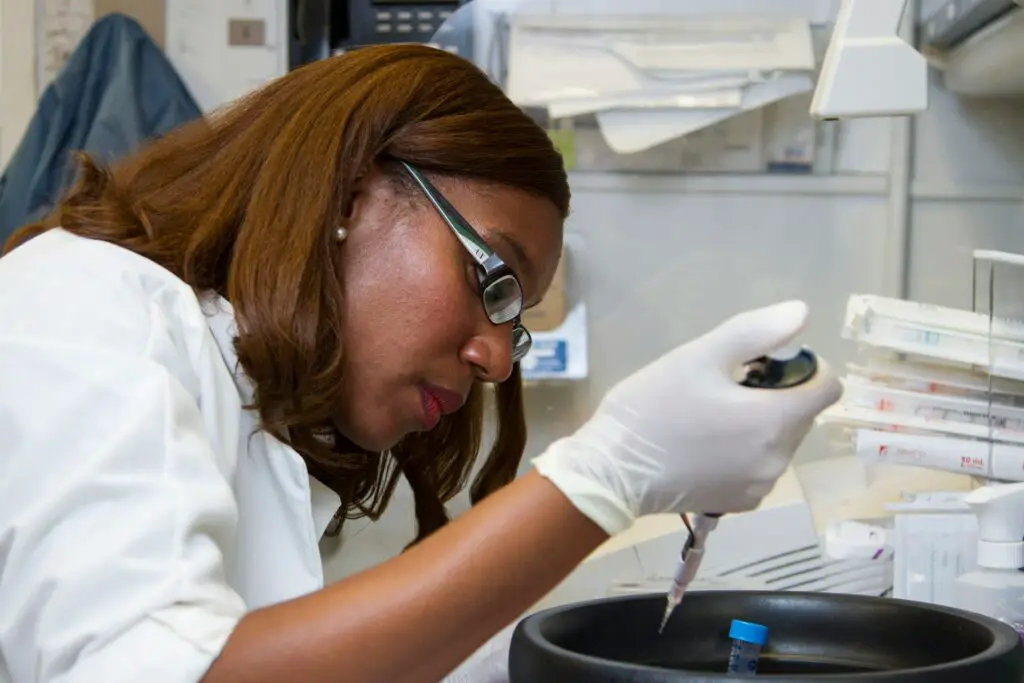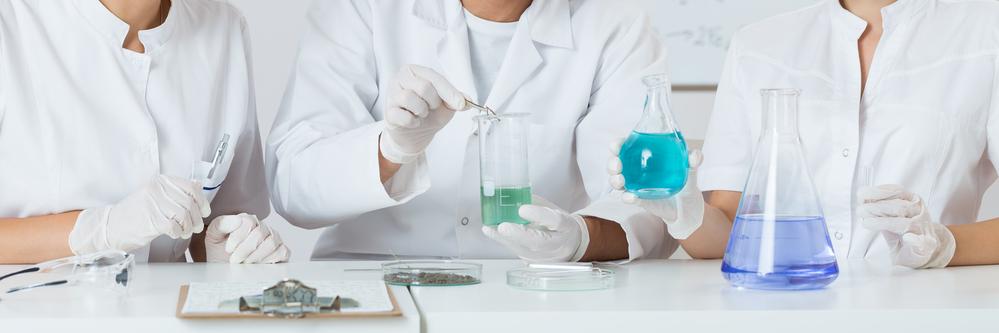As a BetterHelp affiliate, we receive compensation from BetterHelp if you purchase products or services through the links provided
In the demanding sphere of medical school research, the access to and management of chemicals play a critical role in advancing scientific discovery. With research teams engaged in groundbreaking studies that could lead to significant medical breakthroughs, practical strategies for obtaining, storing, and using chemicals are paramount.
This section aims to explore the complexities involved in navigating chemical suppliers, discuss best practices for inventory management, and address safety protocols that comply with regulations and foster a culture of responsibility and innovation in the laboratory environment.

Navigating Chemical Suppliers
Identifying suitable chemical suppliers is a critical first step in ensuring a steady and reliable supply chain for medical research needs. Researchers must evaluate suppliers based on cost and the quality of chemicals, the reliability of delivery, and adherence to safety standards.
Establishing solid relationships with reputable suppliers can lead to improved support, more negotiable terms, and a better understanding of the researchers’ specific needs. Researchers should seek suppliers that participate in ethical sourcing and show a commitment to environmental sustainability.
By aligning with suppliers that share these values, medical schools can contribute to a more responsible global scientific community, ensure compliance with environmental regulations, and potentially reduce the carbon footprint associated with their research activities. As the people from Venogen add, the affordability of access to analytical samples is a key factor limiting research and development. By establishing relationships with suppliers committed to ethical practices, researchers may be able to negotiate more affordable prices for the chemicals they need.
Best Practices for Inventory Management
Effective inventory management ensures that medical research labs can maintain an optimal balance of chemicals—enough to avoid unnecessary production delays without incurring excessive storage costs or the risks of having dated stock. Utilizing digital inventory management systems can streamline tracking, reduce errors, and facilitate a more efficient use of resources. These systems can be programmed to send alerts when chemicals are nearing expiration or when stock levels fall below a predetermined threshold.
An organized inventory system improves safety in the lab by reducing the risk of accidental misuse of chemicals. It facilitates proper segregation of incompatible substances and helps maintain accurate material safety data sheets (MSDS) for all chemicals on hand. As regulations and recommendations change, an effective inventory system can also adapt quickly, ensuring that the lab complies with the latest safety standards.
Safety Protocols and Compliance
Safety in a chemical-focused research environment is paramount. It’s not just about meeting regulatory requirements—it’s about protecting the well-being of researchers and supporting the integrity of their work. Safety protocols should include regular training sessions, clear labeling and signage, and ready access to emergency equipment such as wash stations and fire extinguishers. Protocols must be periodically updated to incorporate new safety information and technologies.
Compliance with applicable laws and regulations avoids legal repercussions and fines, but it’s also about building a safety-first culture within the research community. This includes proper waste disposal, handling of hazardous materials, and emergency preparedness. Regular audits and inspections can help ensure that safety procedures are followed and that researchers feel confident and secure in their working environment.
Enhancing Laboratory Efficiency through Technology
Leveraging technology in the laboratory can significantly streamline research activities. Automated systems and advanced software can assist in tracking chemical use, monitoring storage conditions, and ensuring precise measurements in experiments. These technologies can reduce human error and improve the reproducibility of experiments, which is crucial for the validation and credibility of research findings.
In addition to improving accuracy and efficiency, technology in the lab enables researchers to focus more on their work’s creative and analytical aspects. Automation of routine tasks frees up time for critical thinking and in-depth analysis, potentially leading to faster discoveries and breakthroughs in the medical field.
Fostering a Culture of Responsibility and Innovation
A successful medical school research lab is characterized by a culture where responsibility and innovation thrive. Ensuring all team members understand their roles in maintaining safety standards and managing resources can lead to a more cohesive and focused research effort. Responsibility also extends to documentation and record-keeping, which is crucial for reproducing results and maintaining the integrity of the research process.
Equally important is encouraging innovation, where researchers feel empowered to explore new ideas and approaches in their quest for medical advancements. When a lab fosters an atmosphere that values responsibility and ingenuity, it can accelerate progress and inspire the next generation of researchers to push the boundaries of what’s possible in medical science.

The meticulous management of chemical access, inventory, and safety protocols, the strategic incorporation of technology, and the cultivation of a responsible and innovative culture constitute the backbone of a successful medical research lab. As medical schools delve into new realms of scientific inquiry, these elements will remain essential in supporting the relentless pursuit of knowledge and the development of life-saving treatments.
By committing to these principles, medical school research labs can ensure that their contributions to medicine are significant, sustainable, and ethically sound, paving the way for a future where health and science advance in harmony.
- Stress Management: What is the Relationship Between Stress and Addiction? - June 28, 2024
- Exploring Techniques to Maintain a Healthy Lifestyle without Drugs - May 28, 2024
- How Acupuncture Helps Treat Chronic Fatigue Syndrome - May 28, 2024
This site contains affiliate links to products. We will receive a commission for purchases made through these links.




